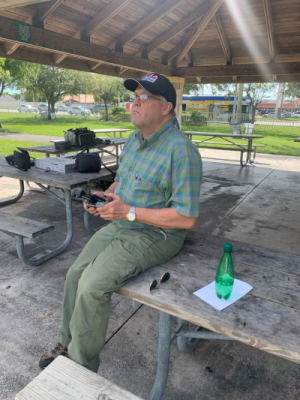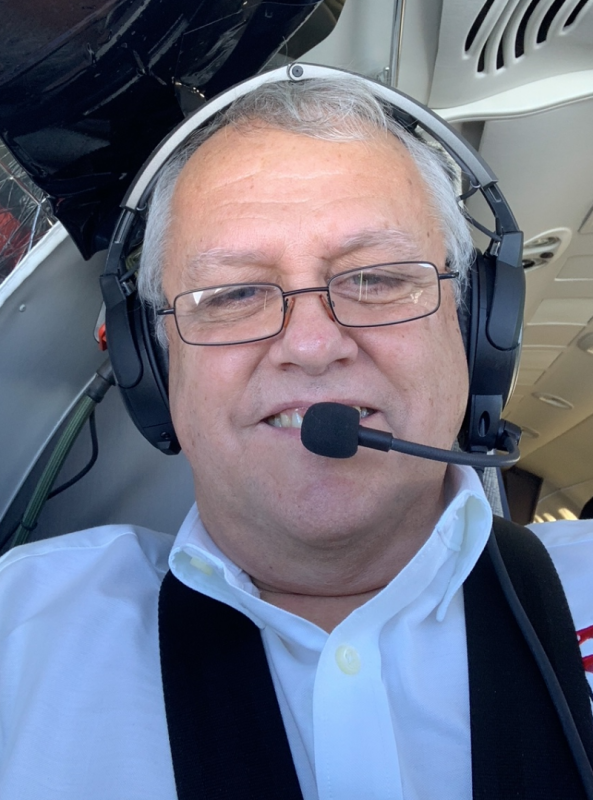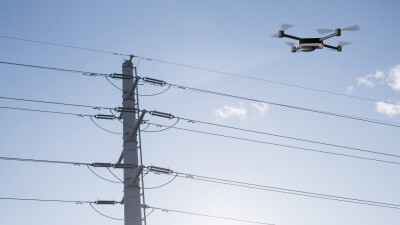2023 marks an important milestone in my life. It was exactly 10 years ago that I was introduced to my first drone, my beloved Trimble UX5. I was named Director of Sales for Latin America for the Geospatial Division at Trimble Navigation, and the winged black beauty was one of my products.
Since then, we have been witnessing this technology truly take off, and drones become the next “big thing” that will newly define how we go about our daily lives, impacting everything from how packages are delivered to how people will someday be transported.
As a surfer, I tend to see life in terms of ocean images and metaphors. Big waves come in sets, and surfers develop a sixth sense on which wave will peak where and when we should paddle towards that zone in a race with other surfers. I’ve seen numerous waves of different shapes and sizes over the past decade, all of which have impacted the waters that we’re swimming in today.
From the perspective of my career, the first wave came in 1980 when I had my first personal computer, a Radio Shack Model 1 with 16K of memory and no hard drive (I still have it!).  I missed that wave by not investing in it, but the limitations of 16K were rather stark, even then. As an illustration of how quickly things change, “16K” is now shorthand for resolution at 15360 x 8640, rather than the computing power that took Apollo 11 to the moon.
I missed that wave by not investing in it, but the limitations of 16K were rather stark, even then. As an illustration of how quickly things change, “16K” is now shorthand for resolution at 15360 x 8640, rather than the computing power that took Apollo 11 to the moon.
Then came the second wave, which we’ll just call “The Internet,” that took shape in the 1990s. That was followed closely by cellular phones and eventually, by the end of the 2000s, the smartphone. I missed that wave too, by ignoring the huge impact it would have on our way of life.
The third wave of my of my professional life came about in 2013 with the advent of drone technology. It was one I was determined not to miss, not just because of how I could see that these devices would be so consequential and dramatic as all of those other technical revolutions, but also because it was a wave I understood after living through the two that preceded it.
I am happy to report that I caught this third wave and am riding it with gusto!
So, how do we use the lessons of the past to create an accurate forecast for the future? This is the dilemma that has haunted thousands of visionaries before us. A future where every human had the capacity to access the entire library of human knowledge via a handheld device was beyond the imagination of most science fiction writers mere decades ago. When the auto industry was in its infancy, some technologists thought the idea of a self-propelled machine (aka, a car) would make a person the object of ridicule. If these oracles of the future couldn’t envision what was coming, how can anyone predict what changes drones will bring to our daily lives?
One thing is for sure, drone technology is already having an impact in traditional crewed aviation. The impact can literally be seen every time a drone takes to the sky, but it’s also been evident with the introduction of revolutionary concepts such as electric vertical takeoff and landing (eVTOL), all electric fixed-wing aircraft, automated detect and avoid (DAA), and alternative ways of propelling aircraft through the air.
I received my commercial pilot license in 2017, and flying jets gave me a new perspective on the crewed side of the aviation equation. That enhanced my ability to understand the distinct viewpoints of crewed and uncrewed stakeholders.
This understanding is at the heart of many of the articles I’ve put together for Commercial UAV News over the years. And now, as I approach my 300th article, I can reflect on how that experience continues to define my role as an intermediary between two industries that are destined to become one even though there currently exists a great divide between the two.
In 2016, in my first article for the site called “Part 107 and the Pilot in Command Burden,” and I remember putting that together with a strong desire to bring to the uncrewed community a sense of urgency that would compel them to be part of a greater aviation family. I wanted those uncrewed pilots and the drone industry as a whole to understand that, as traditional aviation pilots, we are responsible for the safety of people on the ground and that any vehicle fighting gravity is subject to accidents and mishaps. It was a reality that I saw too many in the drone industry either taking for granted, or being somewhat oblivious about it in a way that I knew would eventually create problems.
But in 2017, I realized I had a decision to make. I couldn’t explore or understand this technology as an outsider. I knew I needed to become part of the industry, but that had to be either as a protagonist or a chronicler. I chose the latter.
The reasons are many, but suffice to say, creating a bridge between two communities that know and understand each other in pursuit of a common goal is a task best suited for someone who can highlight where connections between those communities need to be made. The full integration of crewed and uncrewed aviation in controlled airspace is something that will happen, but I know I can make those connections from this “chronicler” perspective in an especially powerful way.
That task is more critical than ever, as crewed and uncrewed communities are still behaving as if they are in conflict with each other.
That’s something you can see in agriculture, where you find pilots of existing agricultural aircraft being openly hostile towards the growing number of uncrewed alternatives that are sprouting up. These drones and services have been created out of convenience and are a perfect fit for the mission, but that means little to pilots who are used to the way things have always been done with agriculture spraying. But you can see that sort of hostility in other sectors as well, with everything from skepticism about how drones are being used for utility inspections in the energy sector to questions about how UAVs might change the way billing can be done for construction projects.
This hostility is wrong for many reasons, but that’s why I’m also so focused on building a bridge between aviation communities. I firmly believe that the opportunity to coexist will be here for decades to come. These are opportunities others have already cultivated to great success.
You can see an example of this success with aerial mapping and photogrammetry applications. Professionals at every level understand what it means to provide land surveyors with another tool in their toolbox. Did this mean that UAVs completely replaced traditional crewed aircraft in mapping? The answer is a resounding “no,” given the constraints not only in terms of regulations but also in terms of hardware. It will take at least a decade for the uncrewed industry to develop and manufacture a drone that can safely fly at 10,000 ft and 240 kts and fly for more than three hours. Even then, the costs and logistics of such operations will further evolve, making talk about “replacement” a moving target that will never stop moving forward.
Drones have been able to help fire and police departments improve their safety procedures by creating distance between first responders and harmful situations. They’ve provided situation awareness that would otherwise be unavailable and located missing people by serving as force multipliers. Does that mean drones are going to replace police and firefighters? The same question was asked when scanners and radios first appeared, and the answer is the same now as it was then. All of these innovations are simply tools that support how people can do their jobs and increase their chances of success.
Going back to that third wave of technology that I’m personally seeing but is also one we’re all living through, I’m having the most rewarding and exhilarating ride of my professional life. Perhaps the third wave came in a time when my age allowed me to truly examine an industry that had always been my passion. Perhaps this third wave came just in time as a way for me to build essential bridges between pilots of crewed and uncrewed aircraft since the two industries are just now beginning to reconcile with the idea that they will (eventually) be one single sector that is solely focused on safety and effectively utilizing the airspace, no matter the aircraft or operational details.
The great thing about my first uncrewed decade is the fact that I feel I have made a difference with my chronicles. While that history stretches all the way back to 2016 on Commercial UAV News, it now also includes writing for six different publications in two languages. The shape of this third wave has been perfect for me in terms of timing and suitability, but it has also provided an incredible runway for this next decade that I’m looking forward to seeing many others further explore and cultivate as we build bridges between communities, industries, and entire technology ecosystems.
I’m beyond excited to connect with people from all those places as part of our online community and at events like Commercial UAV Expo, because these digital and physical platforms are an essential part of any connection. These piloted and non-piloted aircraft today are separate, but what it means to bring them together over the next few years and beyond will define my personal fourth wave as well as a development that anyone and everyone interested in drone technology needs to understand and support.















Comments